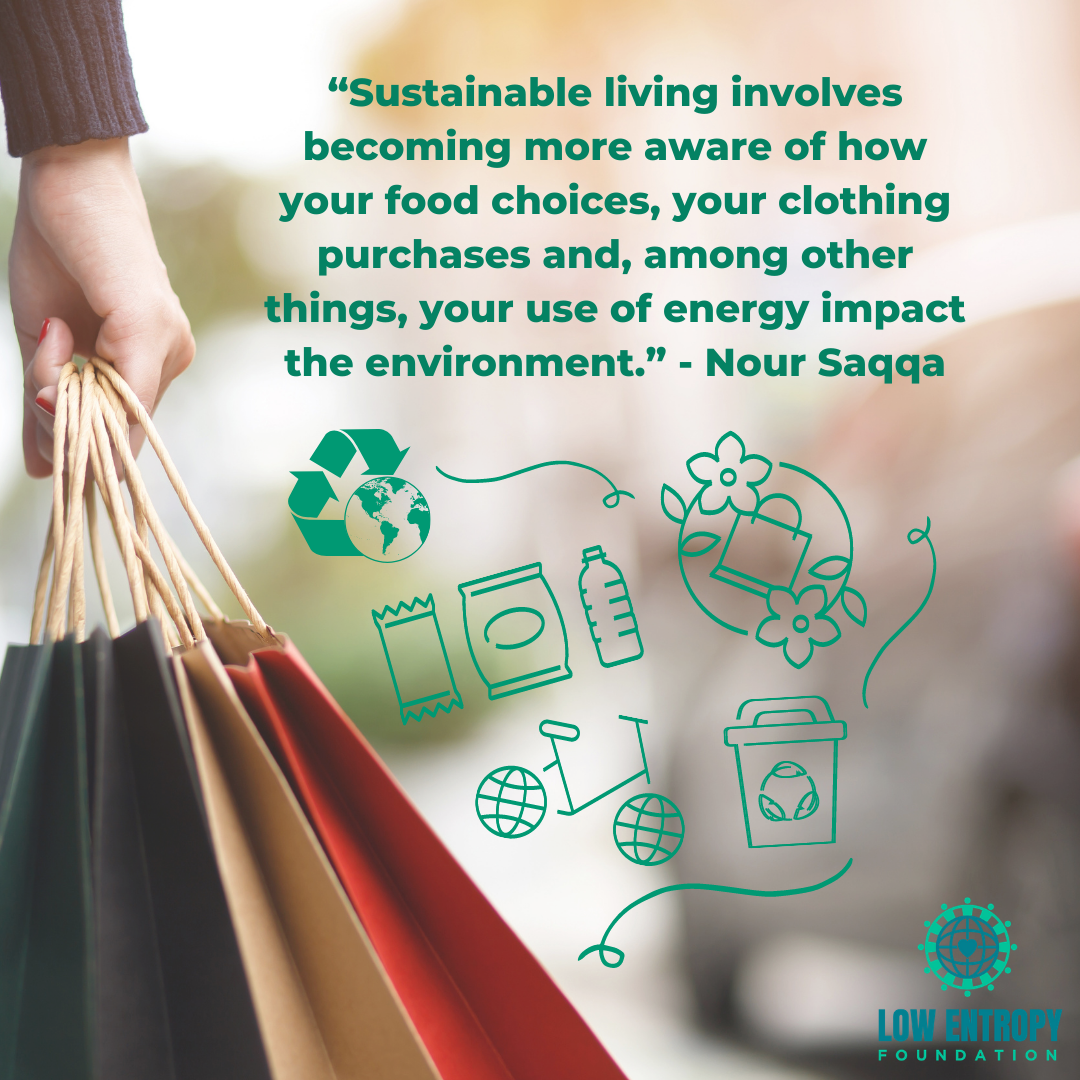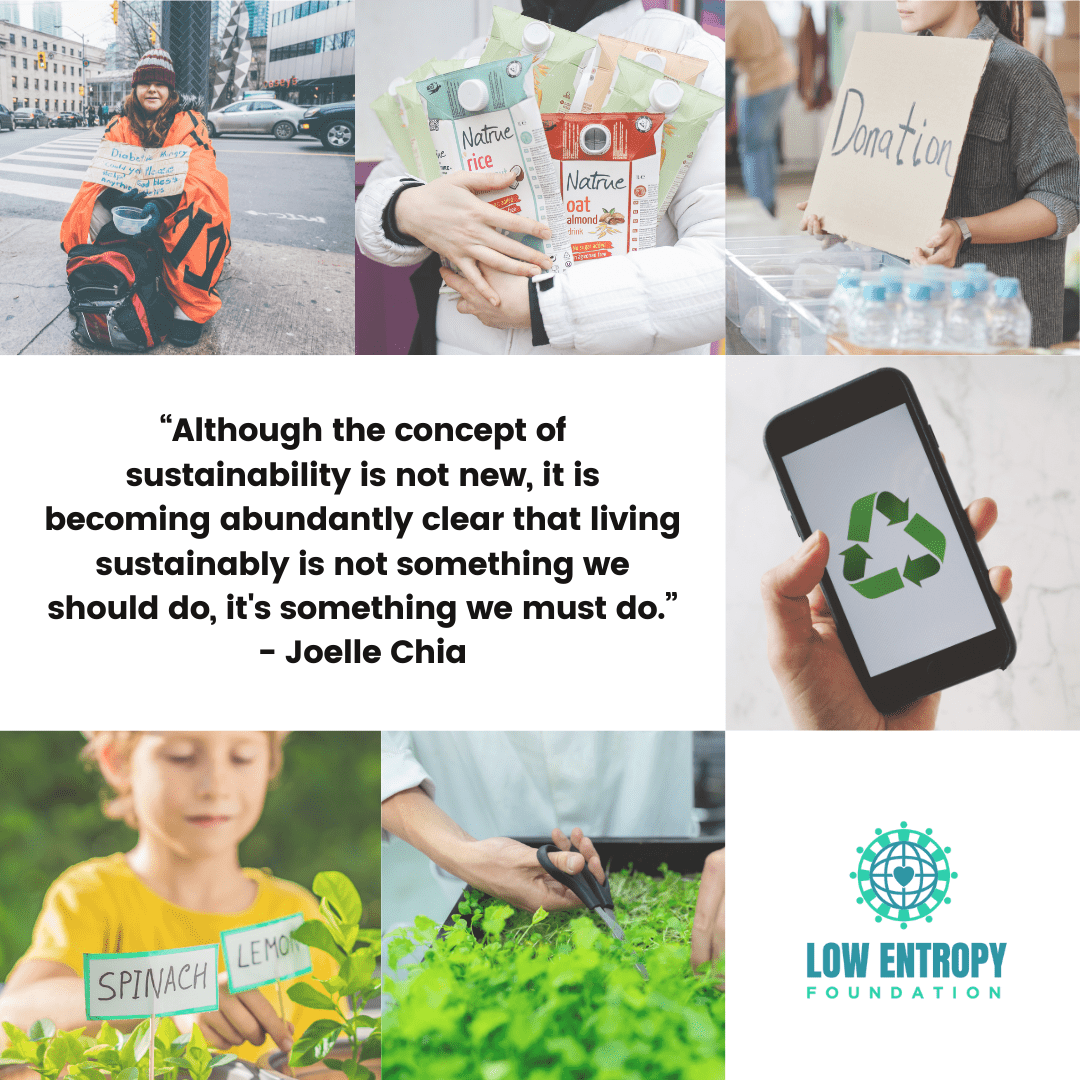It’s a handful of low-effort, eco-friendly choices from Low Entropy eco-friendly volunteer writer Nour Saqqa!
When you hear bloggers, global organizations, artisans, and environmental activists tossing around the phrase ‘sustainable living’ enough times, you begin to wonder what it means and why you should care about it.
Sustainable living involves becoming more aware of how your food choices, your clothing purchases and, among other things, your use of energy impact the environment. It means living in a way that reduces your environmental impact and supports both present and future generations. When you live more sustainably, you can improve your health, save money and feel happier.
Even though a sustainable lifestyle looks different for everyone, there are areas where you can reduce your personal and societal environmental impact. Here are a few examples of actions you can take to start living a more sustainable lifestyle today.
- Replace Plastics with More Eco-Friendly Alternatives
Replacing plastics may sound like a challenging task, especially since we all live in a plastic-filled world. But there are many alternatives — and it’s becoming easier to find them. Reducing your use of plastics can be as simple as replacing your plastic water bottles, straws, single-use cups and lunch boxes with ones made from stainless steel. Stainless steel products are not only much more durable than plastics, but are also free of toxic chemicals like Bisphenol A, also known as BPA. Other alternatives include glass, beeswax-coated cloth, wood, bamboo or cardboard that’s not coated in plastic.
- Use Less Household Energy
Consuming less power at home is both good for you and the environment. When you dial down your electricity use, you save money and help reduce the number of toxins released into the environment. Using less electricity also means that you’re helping conserve limited resources such as water, fossil fuels, minerals, nuclear energy and natural gases. You can start by switching off appliances you’re not using — and that includes a tablet that you just left on your couch or computer desk. Other ways involve replacing your incandescent lights with LED lights and buying a more water-efficient showerhead. No matter how many of these changes you decide to make, any minor change counts.
- Use Your Bike Whenever You Can
Swapping your car with your bike can also be a great way to stay fit and benefit the environment. Cycling will help you feel less depressed and less stressed. It will also help improve your posture and joint mobility. For many, this mainly aerobic activity can also increase muscle strength, flexibility and cardiovascular fitness.
Every time you cycle, you also help reduce air pollution, parking problems and the number of burned non-renewable fuels — and these are just a few of the benefits. Imagine if you knew them all. So, the next time you plan to go on a short trip, think of all the positive changes you can make to your health and the environment’s health just from changing your transportation.
- Wash Clothes in Cold Water
If you were just sick and slept on your bed, you should probably rinse your clothes with hot water. In any other instance, cold water is the better option. Cold water requires a lot less energy than hot water, and this means that you can save some real money by making this change. Cold water also helps your clothes last longer, and removes stains effectively. Clothes are also less likely to shrink, wrinkle or fade in cold water. When you choose to use cold water, the environment will also thank you because this action helps prevent more carbon pollution.
- Upcycle Your Clothes
Upcycling is an easy way to reuse what you already have by transforming it into something new. In the process, you also help reduce greenhouse gas emissions and textile waste — waste that ends up in landfills and takes a long time to decompose or get rid of. By being more sustainable with clothes, you can make a difference.
Choosing to live sustainably doesn’t have to be so challenging. And sometimes, the best approach is to start small. It can be as simple as swapping your plastic bottle with a stainless steel one or using less water when you shower. No matter what eco-friendly changes you decide to make today, it will be worthwhile for both you and all future generations.
Do you have any ideas for easy, eco-friendly lifestyle changes? Like Nour says, every little bit counts! Share with us in the comments below or on any of our social media channels!








